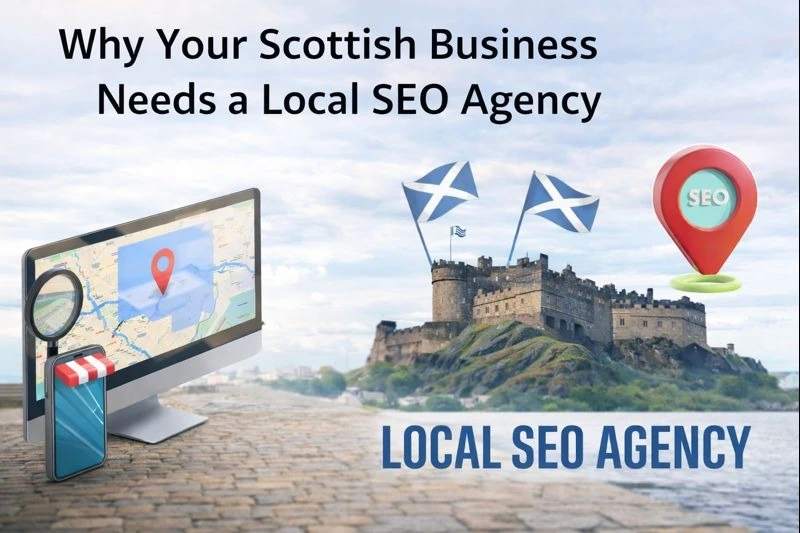Are you ready to unleash the power of content marketing and skyrocket your digital marketing strategy?
Content marketing is a powerful tool for companies to build their brand, get leads, and connect with potential customers.
In this guide, we will explore the tips and learn strategies that could help you achieve great results.
But first, let’s establish what exactly content marketing is. Information marketing entails creating and distributing useful, relevant, and informative information in order to attract and maintain a certain audience. Content marketing, as opposed to traditional advertising, focuses on providing value rather than simply pushing items or services.
Businesses may create trust, establish thought leadership, and cultivate long-term connections with their audiences by offering excellent content.
Guideline for Content Marketing
Understanding Content Marketing
Understanding content marketing requires a firm grasp of its fundamental concepts and objectives. At its core, is about creating content that aligns with the desires and interests of your target audience.
By providing top-notch and pertinent content, you can establish credibility, cultivate client loyalty, and position your company as a pioneer in the industry.
Furthermore, the connection between content marketing and SEO is undeniable. The significance of content in search engine optimisation is beyond exaggeration. You may boost your website’s exposure in search engine results and generate organic visitors by providing relevant and optimised content. Content marketing and SEO intertwine undeniably, forming a powerful combination that can propel your online presence to unprecedented levels.
Benefits and Success Rate of Content Marketing
The advantages of content marketing are numerous and far-reaching. When done correctly, it can provide amazing outcomes for organisations of all sizes. It’s not only about raising brand recognition; it may also lead to actual commercial results.
Statistics and case studies speak loudly about the effectiveness of content marketing efforts. Content marketing investments result in greater conversion rates, more website traffic, and enhanced customer engagement. Creating compelling content that resonates with your target audience allows you to achieve multiple benefits. These include building brand loyalty, attracting potential customers, and forming long-lasting relationships with clients.
Content marketing acts as a driver of brand recognition, allowing firms to reach a broader audience and leave an impression. By consistently creating valuable content that meets your audience’s needs, you can establish your brand as a trusted and reliable choice.
Content Marketing Examples
Real-life examples may be extremely enlightening and motivating when it comes to content marketing. Let’s examine several remarkable strategies from various industries and discover the concepts and methods that contributed to their success.
Example 1:
MOZ used a series of fascinating blog entries, engaging films, and interactive infographics to target certain audiences. By researching their target audience’s interests and challenges, they created content that deeply connected with them. Their optimised content brought in more website visitors and high-quality leads, resulting in a significant boost in conversion rate.
The success of this campaign highlights the importance of understanding your target and creating relevant material that meets their demands.
Example 2:
NP Digital used a multi-channel strategy that included educational blog entries, visually appealing social media material, and thought-provoking podcasts. They were able to reach a larger audience and establish a consistent brand experience by exploiting the qualities of each channel. They acquired considerable brand awareness and meaningful commercial benefits via smart distribution and marketing.
Using various content formats and social media can enhance content marketing and lead to great results.
Learn from these content marketing examples to improve your own strategy by analysing them for valuable lessons and insights. Analyse your audience, make interesting content, and promote it strategically to reach more people and have a bigger impact.
Content Marketing vs Social Media Marketing
Content marketing and social media marketing have similar goals and can collaborate to achieve impressive outcomes. Let us investigate the contrasts, similarities, and synergistic possibilities of these two techniques.
The goal of content marketing is to attract and engage an audience by developing and sharing valuable information. It includes a variety of content types such as blog articles, videos, infographics, and more. Social media marketing utilises social media platforms to increase brand awareness, engage with users, and expand content visibility.
These two tactics, however, are not mutually exclusive. In fact, they can perfectly complement each other.
To reach and engage more people, use social media to distribute and promote your content. Combine content marketing and social media strategy for better results. Furthermore, social media networks provide useful insights and comments that you can use to inform your content development process.
Consider the following techniques to maximise the effect of your efforts:
- Align material with Social Media Platforms: Tailor your material to each social media platform’s unique qualities and preferences. Design visually appealing content for social media platforms like Instagram and Pinterest, with concise and captivating messages for Twitter.
- Engage and connect with your social media following by asking questions, creating dialogues, and reacting quickly to comments and messages. This type of participation builds a feeling of community and deepens ties with your target audience.
- Collaborate with influencers in your field to increase the reach and credibility of your content. Influencers may help promote your content to their targeted audience, raising brand awareness and drawing new followers.
Combine content marketing and social media strategies for great results in your company.
Content Marketing in Digital Marketing
Within the context of digital marketing, content marketing is critical. It complements and improves a variety of other digital marketing channels, including as SEO, email marketing, and paid advertising. Let’s look at how content marketing fits in with these channels and helps your overall success with digital marketing.
SEO: Content and SEO have an inextricable link. High-quality, optimised content is critical for increasing search engine exposure and delivering organic traffic to your website. Improve website SEO by using relevant keywords, writing helpful blog posts, and optimising meta tags to attract targeted visitors.
Email Marketing: Successful email marketing initiatives rely on content marketing. The foundation of your email communications is engaging and meaningful content that attracts subscribers, nurtures leads, and drives conversions. To improve email marketing, divide your email list and send personalised content to specific target groups.
Paid Advertising: Content marketing may help your paid advertising initiatives perform better. You may boost ad relevancy, click-through rates, and overall user experience by generating appealing and useful landing page content. Well-crafted content may also help to increase conversion rates, ensuring that your paid advertising spend yields the best returns.
To create a strong and unified approach, include content marketing in your digital marketing plan. This will allow you to utilise the benefits of each channel.
To achieve optimal results, connect your content to the interests of your audience. Additionally, ensure that search engines can easily locate your content. Lastly, share your content on various digital marketing platforms.
Content Marketing Strategy

A robust content marketing plan is essential for success in your activities. Let’s break down the key components of a great plan and see how they contribute to your overall success.
Defining Your Target Audience: Understanding your target audience is essential for developing content that will appeal to them. Conduct extensive research to determine their demographics, preferences, pain issues, and areas of interest. This understanding will drive your content production and guarantee that it meets their unique requirements.
Setting Objectives: Define your content marketing objectives clearly to offer direction and emphasis for your efforts. Your goals should be clear, measurable, achievable, relevant, and time-bound (SMART), whether they aim to increase brand awareness, drive website traffic, or generate prospects. Setting measurable targets will allow you to measure your progress and assess the efficacy of your plan.
Making a Content strategy: Create a detailed content strategy including your content subjects, forms, and distribution methods. Conduct keyword research to uncover relevant and high-performing terms that correspond to the search behaviour of your target audience. This will improve the visibility of your content in search engines and drive organic visitors. Create a content schedule to ensure consistent posting and a well-organised approach to content generation.
Types of Content Marketing

Content comes in a variety of formats, each with its own set of advantages and disadvantages. Let’s look at the many forms of content you may use to engage your audience and achieve your marketing objectives.
Blog Posts:
Blogging remains a popular and effective content format. It allows you to provide valuable information, share insights, and establish thought leadership. Blog posts are versatile and can be optimised for search engines to attract organic traffic.
Videos:
Video content has gained tremendous popularity due to its engaging nature. Videos can captivate your audience, convey complex messages effectively, and encourage social sharing. They are particularly effective for storytelling, tutorials, product demonstrations, and interviews.
Infographics:
Infographics combine visual elements with concise and informative content to present data or complex concepts in an easily digestible format. They are highly shareable and can generate backlinks and social media engagement.
Podcasts:
Podcasts have experienced significant growth in recent years. They provide a convenient way for audiences to consume content while on the go. Podcasts allow you to engage with your audience through interviews, discussions, and educational content.
Choosing the correct content kinds is determined by your marketing objectives and target audience preferences.
Consider the type of your content, your resources, and the platforms where your target audience is most engaged.
Content Distribution and Promotion
Creating great content is just the first step. But to reach a wider audience and maximise your content’s impact, you need to focus on distribution and promotion strategies.
Here are some key tactics to consider:
Social media platforms may be used to share and market your content. To increase your reach, identify the platforms where your target audience is most engaged, generate interesting content, and include relevant hashtags. Encourage social sharing to boost the visibility of your material.
Email Marketing:
Use your email list to send your material to subscribers directly. Create attractive email newsletters that offer useful information, updates, and links to your material. Segment your email list to provide targeted content to certain audience segments.
Influencer Collaborations:
Work with influencers or industry experts to increase the reach and credibility of your work. Seek out possibilities for guest blogging, interviews, or influencer shout-outs that will allow your material to reach a larger audience.
SEO Techniques:
Improve your organic presence by optimising your content for search engines. Perform keyword research and include relevant keywords in your text. Improve search engine ranks by optimising meta tags, headers, and alt tags.
Remember to customise your distribution and promotion techniques to your target audience’s preferences and the platforms on which they are most engaged. Experiment with several strategies and analyse the outcomes to fine-tune your strategy.
Measuring and Analysing Content Marketing Performance
Measuring the efficacy of your activities is critical to ensuring you’re on track and meeting your objectives.
Here are key metrics and KPIS to consider:
Website Traffic: Track website traffic to see how well your content is drawing people. To gauge content engagement, track the amount of unique visitors, pageviews, and time spent on your site.
Involvement indicators: Measure indicators like as bounce rate, average session duration, and social media shares to assess user involvement with your content. These indicators reveal how well your material is received by your target audience.
Conversions: Identify and measure conversion points on your website, as well as the number of conversions created by your content. This may include newsletter subscriptions, form submissions, or purchases. Conversion rates may be used to measure the efficacy of your content in generating desired actions.
ROI: Determine your content marketing activities’ return on investment (ROI) by comparing the cost of content generation and promotion to the produced income or other measurable outcomes. This will assist you in determining the profitability and overall worth of your content marketing campaign.
Use technologies like Google Analytics, social media analytics, and marketing automation systems to evaluate and analyse content performance. To optimise your content marketing approach, examine your KPI on a regular basis, spot patterns, and make data-driven choices.
To stay ahead in the perpetually shifting digital world, remember to change your approach based on data and insights and to consistently develop your marketing plan.
Conclusion
Content marketing is an effective method that may yield major advantages for your company. You can captivate your audience, boost brand recognition, and generate meaningful interaction by recognising the value of content marketing, developing a sound plan, employing diverse content kinds, and successfully advertising your content.
It’s now up to you to act and realise the full value of content marketing for your company. Implement the methods and approaches mentioned in this guidance, adapting them to your specific requirements and goals, and optimising your efforts based on data and insights on an ongoing basis.
By consistently delivering valuable and engaging content to your target audience, you can establish thought leadership, foster customer loyalty, and drive business growth.
Ready to supercharge your content marketing efforts?
Contact us today and transform your digital presence with the power of content!




